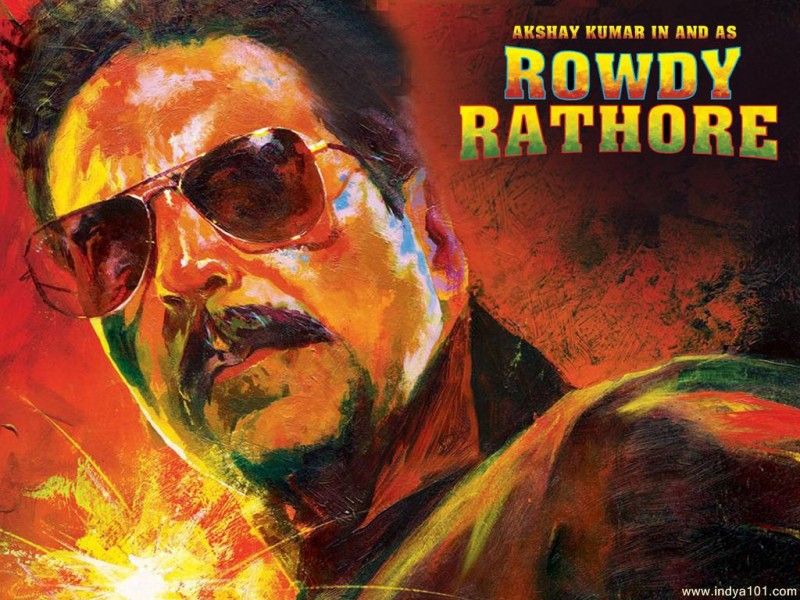
With the release of "Rowdy Rathore" in 2012, Bollywood took a nostalgic turn in the age of technological advancements and glitzy Hollywood-style posters. The full hand-painted version of the movie poster brought to mind an earlier time in Indian cinema when hand-painted movie posters were the norm. 'Rowdy Rathore' paid homage to this artistic tradition. In this article, we will examine the origins and significance of hand-painted movie posters in old Hindi cinema.
The 1950s to the early 1980s are considered the heyday of Bollywood's hand-painted movie posters. These movie posters were a crucial component of film promotion at the time and perfectly encapsulated the spirit of the films they promoted. These hand-painted pieces of art, as opposed to the contemporary digital posters, were produced by talented artists who meticulously brought the story of the movie to life on canvas.
Indian movie posters have a long history that dates back to the early days of the country's film industry, when movies were still silent. Artists hand-painted posters to create visual interest and draw audiences to the theaters in the absence of sophisticated printing technologies. These early movie posters frequently had vivid colors and strong graphics that portrayed the drama and excitement of the films.
Hand-painted posters are an evolving form of art, much like Indian cinema. As the times and tastes of the audience changed, artists started experimenting with new styles and methods. Hand-painted movie posters saw a rise in popularity during the 1950s and 1960s, which are frequently referred to as the "golden era" of Bollywood. Posters for classic movies like "Mother India," "Sholay," and "Mughal-e-Azam" were miniature works of art in and of themselves.
These posters were made by unsung heroes of Indian cinema, the artists. Even before a movie was released, they had a significant impact on how people perceived it. They captured the charisma and charm of actors on canvas by using their paintbrushes to transform them into larger-than-life figures. With their distinctive poster designs, some illustrious artists like MF Hussain, V.G. Parchure, and Diwakar Karkare became well-known.
Bollywood fans remember a number of iconic hand-painted posters from this time period. 'Sholay's' poster serves as a good illustration. The entire cast of the movie is shown in action-packed poses with guns blazing against a flaming background, including Amitabh Bachchan and Dharmendra. The film's rugged and adventurous theme is perfectly captured by the poster's vibrant colors and dynamic composition.
The "Mughal-e-Azam" poster is another iconic image. It depicts the enduring love story of Anarkali and Salim, with Madhubala and Dilip Kumar as its main figures locked in a passionate embrace. The poster's finely detailed design and sumptuous color scheme are a reflection of the opulence and grandeur of the epic saga.
There are many reasons for the decline of hand-painted movie posters in Bollywood. Cost- and time-effective printing techniques were introduced with the development of digital technology in the 1980s. This change caused hand-painted posters to gradually disappear, ushering in a new era.
Although digital posters have advantages, they don't have the same artistic appeal and distinctiveness as their hand-painted forebears. Digital posters frequently lack the distinctive personalization that made hand-painted posters so unique and are instead generic. With each brushstroke and color selection in the latter, the human touch added a level of emotional connection between the audience and the movie.
With hand-painted posters becoming less and less common, "Rowdy Rathore" stood out as a welcome homage to the genre. The film, which was directed by Prabhu Deva and starred Akshay Kumar and Sonakshi Sinha, paid homage to the classic look of Bollywood action comedies. The movie's poster gave a clear nod to the heyday of hand-painted movie posters, capturing the spirit of the movie and paying homage to the style that once typified Indian cinema.
Akshay Kumar plays two characters on the "Rowdy Rathore" poster, exuding machismo and raw energy. The poster has a retro feel to it and exudes the distinct charm of vintage Bollywood posters. The canvas is dominated by Akshay Kumar's larger-than-life presence, which is skillfully painted to capture his rugged charm. The poster pays homage to the iconic hand-painted posters of the past with its vibrant colors, dramatic lighting, and dynamic composition.
The 'Rowdy Rathore' poster attracted a lot of interest and praise from admirers and detractors alike. It served as a reminder of both the artistic skill of hand-painted posters and the lengthy history of Indian cinema. This poster stood out as a work of art that honored the cinematic legacy of the past in an era where digital design predominates.
Since the heyday of hand-painted movie posters, the film industry has undergone significant change. These timeless works of art, which capture the spirit and storytelling of a bygone era, nevertheless continue to play a significant role in Bollywood's history. With its hand-painted poster, "Rowdy Rathore" evoked nostalgia and appreciation for this vanished craft. It's critical to remember and honor the artists who once gave life, one brushstroke at a time, to the cinematic dreams of a nation as we advance in the digital age. In Bollywood's illustrious history, the "Rowdy Rathore" poster is a testament to their enduring legacy and the enduring allure of hand-painted movie posters.
Interesting facts related to World Bamboo Day
How to Boost Your Energy and Mood During Menstruation: Nutrition, Hydration, Exercise, and More